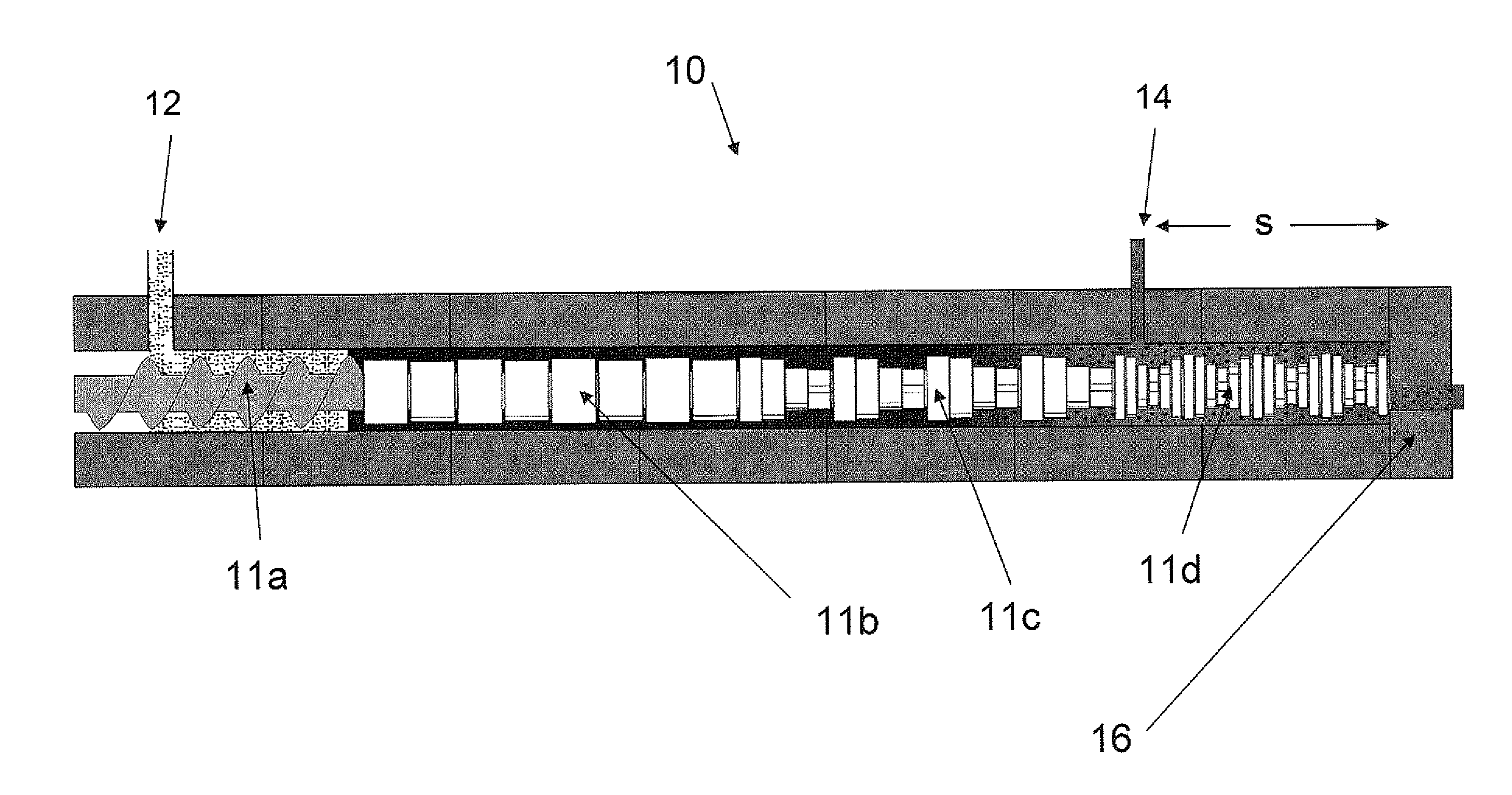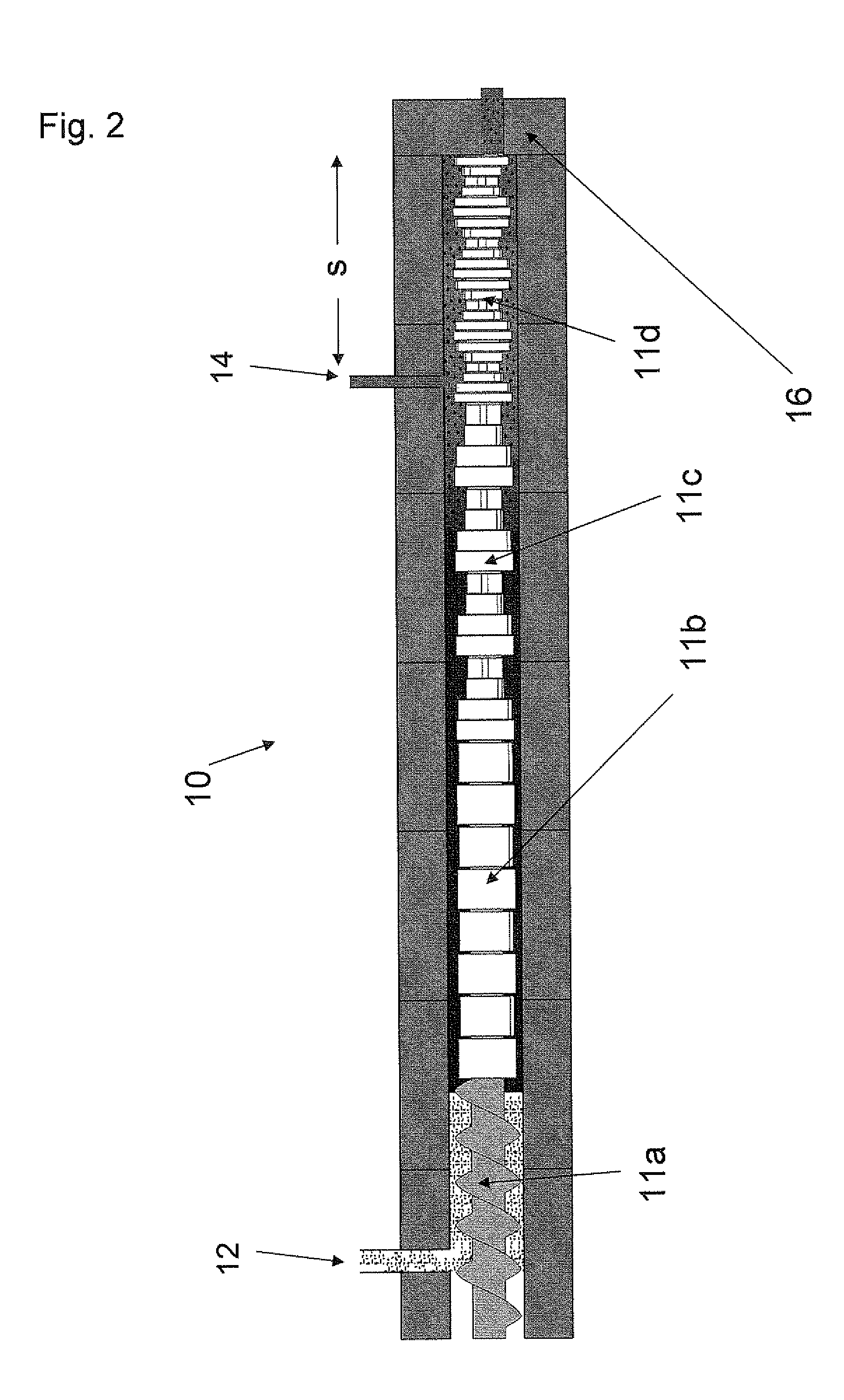Powder coating extrusion process using liquid
a technology of powder coating and extrusion process, which is applied in the field of powder coating extrusion process, can solve the problems of material fracture, increase the probability of breakage, and high breakage probability, so as to reduce the viscosity of materials, prevent the foamed extrudate from coalescing, and perform faster
- Summary
- Abstract
- Description
- Claims
- Application Information
AI Technical Summary
Benefits of technology
Problems solved by technology
Method used
Image
Examples
example
Example 1
[0084]In this Example, the process liquid added to the extruder was demineralised water. A powder coating premix was prepared by dry blending the components shown in Table 1.
TABLE 1COMPONENTSUPPLIERPARTS BY WEIGHTCRYLCOAT 7617UCB560.0PRIMID XL-55230.0RESIFLOW PV88WORLEE8.0BENZOIN2.0KRONOS (TiO2)KRONOS400.0
[0085]This dry premix was introduced into a Berstoff Extruder ZE25 at a solids feeds rate of 16 kg / h. Said extruder was maintained at a process temperature of 120° C. and an exit pressure of 2 bar. Further, said extruder was equipped with a die head outlet fitted with 2 holes of 3.5 mm diameter from which the (foamed) product was extruded. The extruder was connected to Brabender feeders which controlled the premix addition rate and the injection rate of water into the extruder.
[0086]Five experiments were performed using this premix and extruder, these being summarized in Table 2. Where employed, the water was injected at a temperature of 85° C. and a pressure of 15 to 20 b...
example 2
[0089]Two samples of the product of Experiments 1 and 5 of Example 1 were individually ground using an air classifying mill 4S CMT (available from Powder Processing Systems [PPS], Shoeburyness, UK). The airflow, rotor and classifier speeds were kept constant for both samples. The rotor current was maintained for both samples at 18 Amps by adjusting the feed rate of the sample material. The first sample (std.)—where water had not been injected into the extruder—was fed through said mill at a rate of 200 kg / hr and the second sample (test)—where water had been injected into the extruder—was fed through at a rate of 300 kg / hr.
[0090]The particle size distributions of the two milled products were then measured by Malvern Mastersizer and are shown in FIG. 4. As can be seen from that figure, the 50% increase in the throughput rate did not significantly impact the particle size distributions of the milled product. Furthermore, extensive quality control testing of the powder coating products ...
PUM
| Property | Measurement | Unit |
|---|---|---|
| softening point | aaaaa | aaaaa |
| pressure | aaaaa | aaaaa |
| temperature | aaaaa | aaaaa |
Abstract
Description
Claims
Application Information
 Login to View More
Login to View More - R&D
- Intellectual Property
- Life Sciences
- Materials
- Tech Scout
- Unparalleled Data Quality
- Higher Quality Content
- 60% Fewer Hallucinations
Browse by: Latest US Patents, China's latest patents, Technical Efficacy Thesaurus, Application Domain, Technology Topic, Popular Technical Reports.
© 2025 PatSnap. All rights reserved.Legal|Privacy policy|Modern Slavery Act Transparency Statement|Sitemap|About US| Contact US: help@patsnap.com



